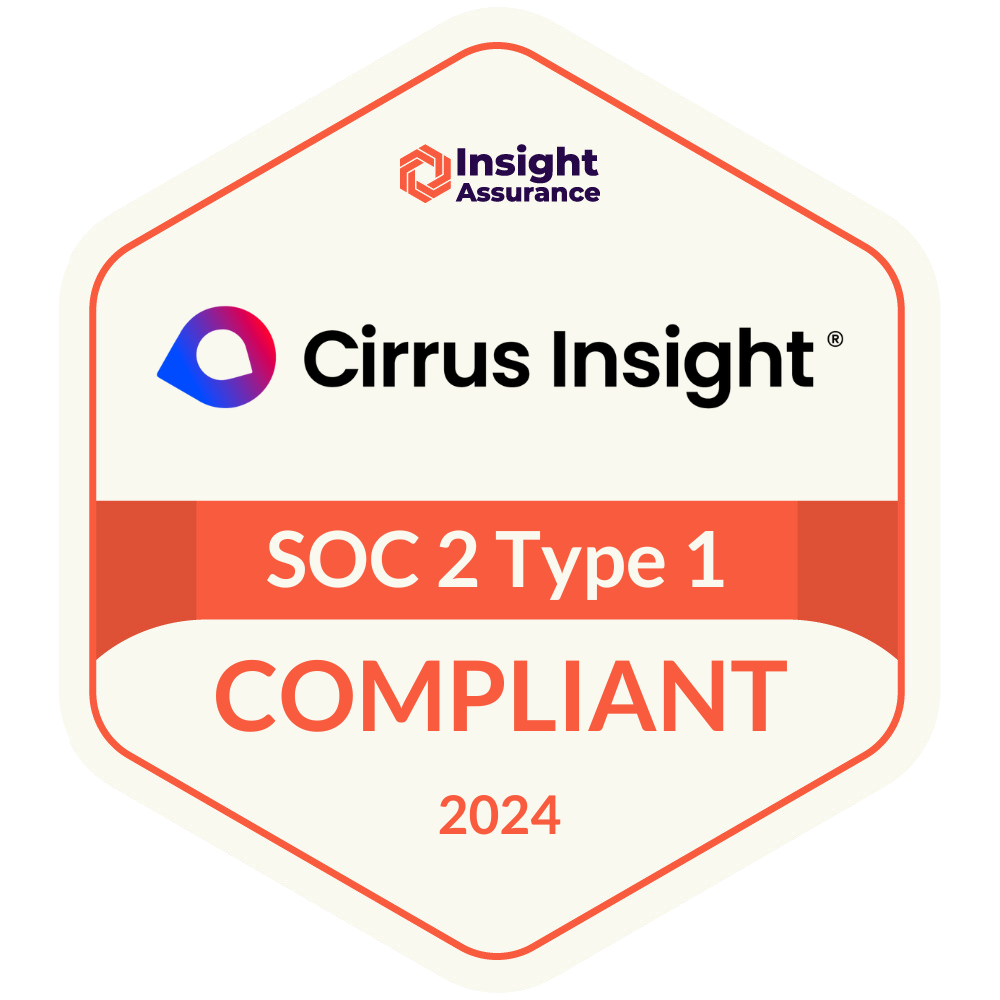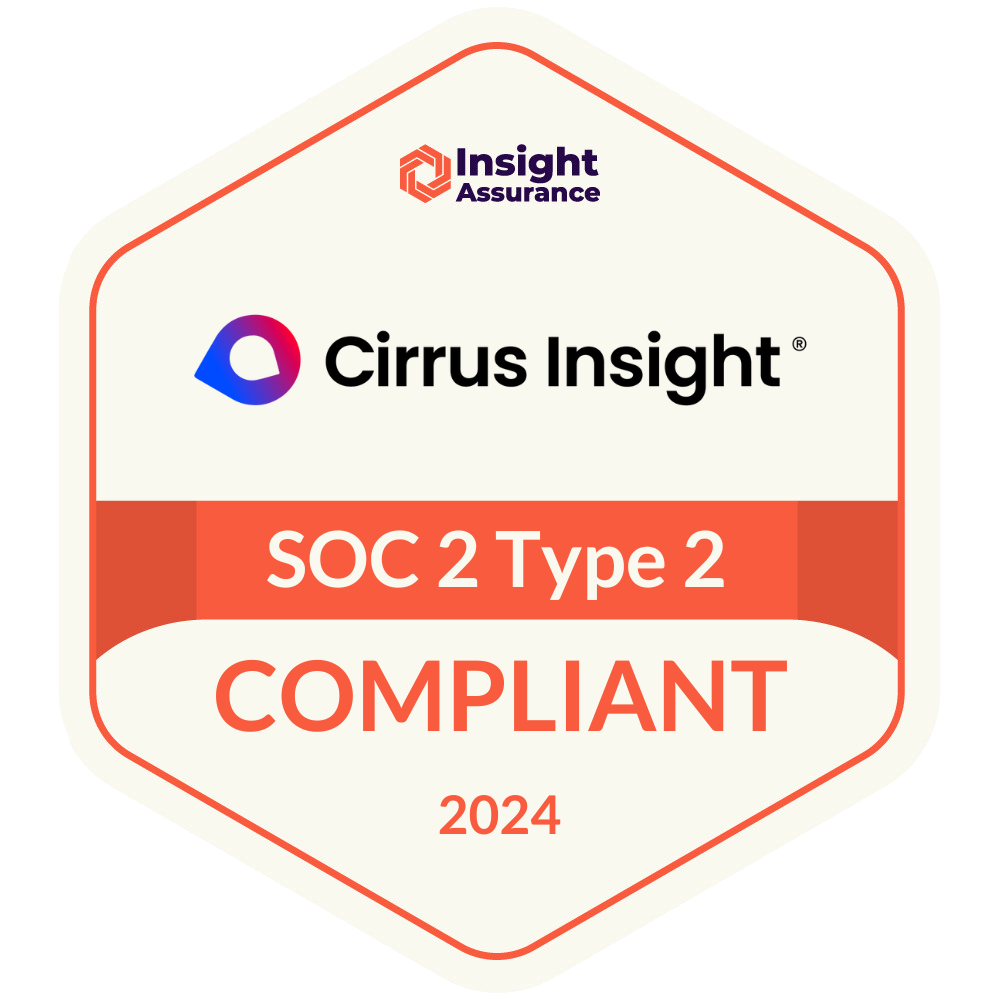- Solutions
-
Products
-
Resources
Sales Automation Tools | Cirrus Insight by Kristi Campbell View all Blog Posts >Get the App, Get the Sidebar, & Get Your Trial Going HereUnleash limitless growth opportunities by partnering with Cirrus Insight.
- Pricing
Filter By:
- All topics
- Sales Productivity
- Sales Intelligence
- Salesforce
- Sales Strategy
- Sales Prospecting
- Book More Meetings
- Best of
- Company News
- Product
- Sales Leadership
- CRM Admininstration
- Sales Metrics
- Supercharge Sales Activity
- Team Scheduling
- Admin
- serious insights
- Prospect Smarter
- Sales Activity Data
- Sales Forecasting
- Scheduling Solutions
- Prospect Faster
- Auto-Sync Everything To Your CRM
- Chrome
- Comparison
- Financial Services
- For Admins
- Getting Started
- IT & Security
- outlook
Subscribe to our Blog for the Latest Insights
Join our blog community to stay informed and receive fresh content and actionable tips directly in your inbox.
How Businesses Can Benefit From Data Integration

Although over 80% of business operations leaders consider data integration to be critical to their success, 80% of businesses also find data management difficult due to the sheer amount and types of data spread out among different silos. Data aggregation would be simpler if all the data was in one place, but that's often not the case.
Read on to discover what data integration is and why enterprises should build it into their processes.
What Is Data Integration?
Data integration is the process of combining data from different sources to create a single, unified source of information. The combined data can then deliver insights into customer behavior, preferences, operational performance, and more. Data integration can be conducted by manual transfers—which are time and resource intensive—or automated using more efficient custom APIs and webhooks. Here’s how your business can use data integration to be more effective and efficient in 2023 and beyond.
How Businesses of All Sizes Can Benefit From Data Integration
Encourage More Collaboration Across Operational Silos
From 2020 to 2022 alone, enterprise data storage grew by over 42% to reach over 2 petabytes of data per enterprise. In short, modern enterprises collect, store, and process a staggering amount of data about customers, operations, and assets. Each of these categories provides one piece of the puzzle of how all the parts of the organization work together to meet its goals and objectives.
However, this data is often spread across silos and only used for one purpose. Data integration can provide employees from different departments an easy way to share useful information with each other to create a whole image.
Improve Productivity by Increasing the Effectiveness and Efficiency of Existing Workflows
Talent shortages and stretched workforces have encouraged business leaders to look inward to improve productivity and increase output. This must be done without putting too much additional strain on your employees. This is especially important considering 62% of employees report that they’ve experienced burnout at work.

Data integration gives you an overview of performance and helps teams find gaps in existing workflows that can be filled through automation or workflow optimization. This allows each department to maximize their productivity with minimal additional resources.
Keep Up With Changing Customer Demographics, Needs, and Preferences
Customer segments evolve over time, but can businesses keep up with these changes? As younger customers grow in their spending power, it’s important for businesses that serve them to be aware of exactly how their needs are different.
50% of customers say they’ll only remain loyal to companies that can anticipate their needs. Data is a key enabler of a business’s ability to predict how customer demands will evolve. Data integration allows business leaders to consolidate information from different customer segments and view them to gauge the importance of each customer need and adjust strategy accordingly.
Provide a Holistic View of Business Operations and Performance to Business Leaders
Business leaders can sometimes struggle to develop a holistic view of how their operation is performing. Manual data transfers, information silos, irrelevant data, and incomplete information can prevent a clear and timely view from being delivered to decision makers.
Effective data integration can give you a clear picture of how each department is performing, the extent to which assets are being used, and the effectiveness of existing workflows.
When data is integrated properly into a single point of truth, companies can save a fortune while simplifying operations. Thailand's True Corporation is an excellent example of this; They are an expanding company that requires assistance integrating their data pipelines in order to ensure the reliability and validity of the data being processed. By implementing data integration measures, they were able to process 2x more data than before while saving over $1 million USD.

Enable Data-Driven Decision Making by Ensuring Highly Accurate, Complete, and Reliable Data Is Always Available
As more organizations use data to make decisions, making sure that data is complete, accurate, and reliable becomes extremely important. Business leaders need a clear and up-to-date view of business performance to make decisions in rapidly changing marketplaces.
Data integration can close gaps and build bridges between operational departments. Once a complete and accurate database is built, executives can make savvy business decisions.
3 Top Tips for Successful Data Integration
1. Only Work With High Quality Data
Successful data integration depends heavily on the quality of the original data gathered from its various sources. Data teams must conduct thorough data quality audits to ensure that the base data contains no errors, duplications, or holes.
High quality data ensures that the end product of data integration can indeed deliver an accurate view of the entire organization. Even after the data is consolidated, businesses must remain proactive in identifying and resolving data issues before they affect operations or business continuity.
2. Define the Objectives of Data Integration Before Starting Data Integration
Different organizations can have completely different reasons for integrating their data. Some businesses might want a better return from their data projects while others might want greater insight into their organization for better decision making. Project leaders have to know what they wish to achieve and what metrics can be used to measure the success of the integration.

3. Ensure That You Have Buy-in From Employees and Leaders at All Levels
Data teams and business leaders can be very proactive in developing data projects for their employees to carry out. But beware—new data responsibilities given to employees should not disrupt their existing workflows. To build a data-driven culture in which employees fully participate, managers should be proactive in understanding their concerns and adjust accordingly.
Data Integration is the Way Forward
Data is becoming an essential tool for modern businesses to make better decisions, design more productive workflows, and enable better reporting processes. However, information silos and poor data governance policies can prevent business leaders from being able to assess their true performance. Consolidating data with effective integration helps organizations close information gaps and improve the yield businesses gain from every data project.





